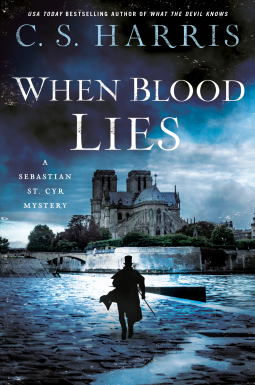 When Blood Lies (Sebastian St. Cyr, #17) by C.S. Harris
When Blood Lies (Sebastian St. Cyr, #17) by C.S. Harris Format: eARC
Source: supplied by publisher via Edelweiss
Formats available: hardcover, large print, ebook, audiobook
Genres: historical fiction, historical mystery, mystery
Series: Sebastian St. Cyr #17
Pages: 336
Published by Berkley on April 5, 2022
Purchasing Info: Author's Website, Publisher's Website, Amazon, Barnes & Noble, Kobo, Bookshop.org, Better World Books
Goodreads
Sebastian St. Cyr, Viscount Devlin, has spent years unraveling his family’s tragic history. But the secrets of his past will come to light in this gripping new historical mystery from the USA Today bestselling author of What the Devil Knows.
March, 1815. The Bourbon King Louis XVIII has been restored to the throne of France, Napoleon is in exile on the isle of Elba, and Sebastian St. Cyr, Viscount Devlin, and his wife, Hero, have traveled to Paris in hopes of tracing his long-lost mother, Sophie, the errant Countess of Hendon. But his search ends in tragedy when he comes upon the dying Countess in the wasteland at the tip of the Île de la Cité. Stabbed—apparently with a stiletto—and thrown from the bastions of the island’s ancient stone bridge, Sophie dies without naming her murderer.
Sophie had been living in Paris under an assumed name as the mistress of Maréchal Alexandre McClellan, the scion of a noble Scottish Jacobite family that took refuge in France after the Forty-Five Rebellion. Once one of Napoleon’s most trusted and successful generals, McClellan has now sworn allegiance to the Bourbons and is serving in the delegation negotiating on behalf of France at the Congress of Vienna. It doesn’t take Sebastian long to realize that the French authorities have no interest in involving themselves in the murder of a notorious Englishwoman at such a delicate time. And so, grieving and shattered by his mother’s death, Sebastian takes it upon himself to hunt down her killer. But what he learns will not only shock him but could upend a hard-won world peace.
My Review:
“Able was I ere I saw Elba,” at least according to a palindrome attributed to Napoleon Bonaparte during his later captivity on the island of Saint Helena. But that’s later. This seventeenth book in the Sebastian St. Cyr series takes place during the spring of 1815 – with Napoleon’s escape from Elba forming the backdrop – and providing some of the motivations – for St. Cyr’s investigation.
Which is where that title comes in.
The St. Cyr series, from its very beginning in What Angels Fear, has revolved around Sebastian St. Cyr’s search for his own identity. As the series began in 1811, St. Cyr used the tools he learned as an agent of the crown, not just in France during the Napoleonic Wars but in other equally dangerous places, to catch a killer and prove his own innocence into the bargain.
Sebastian was operating from a position of relative privilege – even under an accusation of murder. He was the third son and last remaining heir of the Earl of Hendon, carried the courtesy title of Viscount Devlin, and believed that his mother had died 20 years earlier at sea, attempting to escape her marriage and her family. He thinks his father resents him for his mother’s betrayal and their relationship is strained.
Over the course of the series Sebastian has learned that pretty much none of what he believed at the beginning was true. He is not the offspring of the man he calls father – although they have reconciled. And his mother has been alive all these years. Now that the war between France and England is over, Sebastian is in Paris, along with his wife and two children, to meet his mother and ask all the questions that have been churning inside him since he learned the truth.
Only for his mother to die in his arms, stabbed in the back by an unknown assailant for an equally unknown reason. All his questions still unanswered, but swallowed up in the ones that have just presented themselves.
Who killed the wayward Countess of Hendon, better known in Paris as Dame Sophia Capello? And more importantly, not just for St. Cyr but also for the roiling political pot that is on the boil in both France and England, why was she killed? And why was she killed right then, just as Napoleon is about to sweep into Paris from Elba?
Did her death have something to do with her own recent visit to the exiled emperor? Was she a secret Bonapartist? Or was she a spy for one of the other factions hoping to rule a still fractured and bleeding France?
In his search for the answers to Sophie’s death, St. Cyr runs across a possible answer to a question he’s been asking for 20 years – an answer he’s still afraid to discover.
Was the man whose portrait hangs so prominently in Sophia’s house his real father?
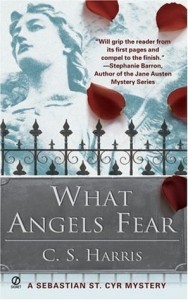 Escape Rating A+: If you are looking for historical fiction that is steeped in its time period to the point where you feel the cobbles under your feet as you walk, then the St. Cyr series absolutely cannot be beat. The series doesn’t just wink and nod at its period, it immerses the reader and the story deeply into what is happening as the hero works his way both through his world and through the mystery that confronts him.
Escape Rating A+: If you are looking for historical fiction that is steeped in its time period to the point where you feel the cobbles under your feet as you walk, then the St. Cyr series absolutely cannot be beat. The series doesn’t just wink and nod at its period, it immerses the reader and the story deeply into what is happening as the hero works his way both through his world and through the mystery that confronts him.
The history in When Blood Lies is about what it feels like to be in the eye of a storm. The storm being France for the past 20something years as the country has careened from absolute monarchy to revolution to near-anarchy to dictatorship and quite possibly back around again. Everyone knows Napoleon is coming back, it’s only a question of when. The restored monarchy seems to have made it their life goal to make the field as ripe as possible for Napoleon’s return by adopting the worst behaviors of their predecessors.
Which doesn’t mean that Napoleon’s return isn’t still going to be awful and bloody and bloody awful. Even if his return is what the French people want, there are too many powers-that-be around Europe who won’t allow him to retake his throne without a fight. (Waterloo, anyone?)
As St. Cyr conducts his investigation, conditions in Paris are breaking down around him. The regime is about to change forcibly – and everyone knows it. Lies and loyalties have suddenly become fluid – as if they’ve ever been solid in the recent decades. He’s desperate to find witnesses and perpetrators before they flee the coming storm or are consumed by it. He’s lost his last chance to question his mother, and his chance to find her killer is rapidly disintegrating.
At the same time, this is, as the series has always been, St. Cyr’s quest for identity. He’s made peace with his legally recognized father, the Earl of Hendon. He is Hendon’s acknowledged heir. The truth about his heritage, even if it comes out, might not change that fact, as his mother was married to the man when Sebastian was born, Hendon acknowledged him as his son, and there isn’t anyone else as Sebastian’s two older brothers deceased long before they had children of their own. His older sister knows his true origins and hates him for them, but she has only daughters and so far her daughters have only daughters so he’s it whether she likes it or not. (If one of her daughters manages to have a son things might get dicey in the legal sense but that hasn’t happened yet.)
But he still wants to know who fathered him. From whom he inherited his distinctive yellow wolf’s eyes and his preternaturally acute senses. On his mother’s wall, there’s a painting of a man who might as well be Sebastian himself in 20 or 30 years. A Scotsman who fought on the French side in the late wars. Who Sebastian might have faced on one or more battlefields.
He clearly needs to know the truth, but now isn’t sure he wants to know it. A truth that he’ll not soon have the chance to discover, as France and England are plunged into war again just as the book concludes.
I came into this series at the very beginning, because the original description of St. Cyr was so fascinating that I had to see what the whole thing was about. Over the course of the series, which consumes four years in book-time and seventeen in the real world, St. Cyr has changed and grown, but he has consistently been compelling and his investigations absolutely riveting, while the depth of the portrait of his life and world has increased in complexity every step of the way.
It’s clear from the way that When Blood Lies ends that there is more yet to come, as France and England are about to be plunged back into the war that still haunts St. Cyr’s nightmares. I can’t wait to find out what happens next, whether he fights or spies – or a bit of both – and how much of himself he discovers along the way.









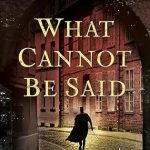
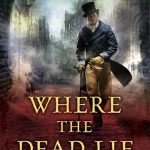

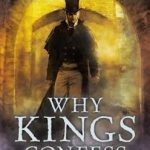
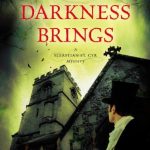









I think the second or third book was already out when I first came across this series, but I’ve been hooked ever since. Harris does everything right, including the characters, the romance element, the mystery, and the historical detail and accuracy. No element is sacrificed for the sake of something else and it all blends seamlessly.
I switched over from reading the books/ebooks to audiobooks quite awhile ago so I’ve fallen a couple of books behind, but this review makes me eager to catch up.
I read the first several, missed a few in the middle, and then picked it up again when I got assigned to review one for LJ and was reminded of just how good they are. Because they are, very, very good.
Marlene Harris recently posted..The Sunday Post AKA What’s on my (Mostly Virtual) Nightstand 5-15-22